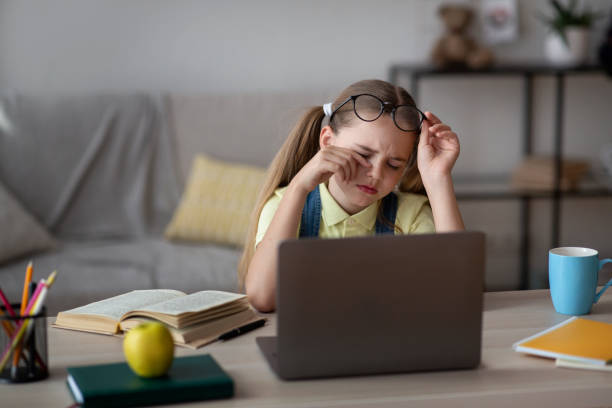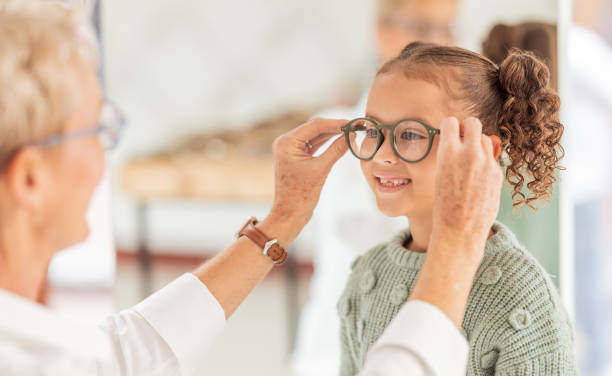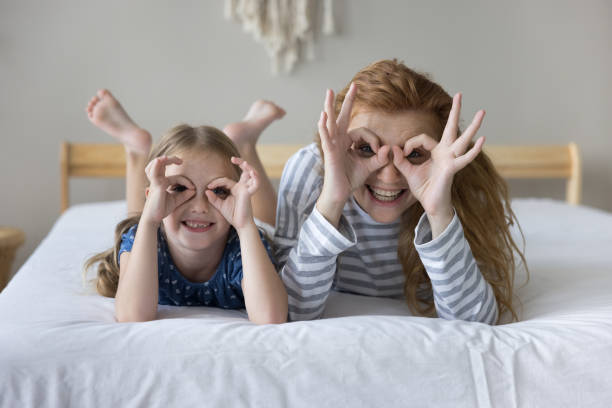Why Protecting Kids’ Eyesight Matters in a Digital Age
In today’s digital age, screens are a normal part of daily life for children. They use tablets for school, smartphones for games, computers for homework, and TVs for entertainment. As technology becomes more common, kids are spending more time than ever in front of digital devices. While screens can be useful for learning and fun, too much screen time can cause problems. Long hours on devices may lead to eye strain, dry eyes, and headaches.
It can also affect focus and cause blurry vision. Over time, this may harm a child’s long-term eye health. Parents should watch how much screen time their children get and make sure they take breaks to rest their eyes. The good news is that small changes in daily habits can help keep kids’ eyes healthy. Simple steps like setting screen time limits, making sure children take regular breaks, and encouraging outdoor play can make a big difference. Helping kids develop healthy vision habits early on can support their eye health now and in the future.
How Screen Time Affects Children’s Vision
The human eye was not made to look at screens for long periods. Children are more at risk because their eyes are still growing and changing. Too much screen time can lead to several vision problems, especially in young kids. When children spend hours staring at digital devices, it can cause eye strain and other issues. Below are some common vision problems that may be linked to too much screen time:
- Digital Eye Strain: This is known as Computer Vision Syndrome. It can lead to dry eyes, blurry vision, and even headaches. These symptoms often happen after too much screen time without breaks.
- Myopia (Nearsightedness): Studies show that nearsightedness is on the rise in children. One reason is they’re spending less time outdoors and more time using screens. Too much close-up work and not enough natural light can affect how their eyes grow.
- Sleep Disruption: Blue light from screens can affect melatonin, the hormone that helps us sleep. When kids use screens before bed, it can make it harder for them to fall asleep and stay asleep. Limiting screen time in the evening can support better rest and overall health.
The American Optometric Association recommends that children get regular eye exams to help protect their vision. These check-ups can catch problems early and make sure a child’s eyes are developing the right way. The AOA also advises kids to take frequent breaks when using screens. Looking away from the screen every 20 minutes and focusing on something far away can help reduce eye strain and keep young eyes healthy.

Signs Your Child May Be Experiencing Eye Strain
Not sure if screen time is harming your child’s eyes? There are some warning signs to watch for. These signs can help you spot vision problems early. Keep an eye out for the following symptoms:
- Rubbing eyes often
- Complaining of headaches
- Squinting or sitting too close to screens
- Red or watery eyes
- Trouble focusing
If your child shows any of these signs, it may be a good idea to take action. Start by cutting back on screen time and encouraging more eye-friendly activities. It’s also smart to talk to an eye care professional. An eye exam can help find any problems early and keep your child’s vision on track.
Healthy Screen Habits for Kids
Helping your child build healthy screen habits now can protect their eyes in the future. Starting early makes it easier to prevent vision problems as they grow. By guiding children to use screens the right way, you can support their long-term eye health. Here are some simple and effective tips to help your child use screens safely:
Follow the 20-20-20 Rule
Teach your child to follow the 20-20-20 rule when using screens. Every 20 minutes, they should look at something about 20 feet away for at least 20 seconds. This simple habit helps rest their eyes and relax the eye muscles. It’s an easy way to reduce eye strain and protect vision during screen time.
Limit Screen Time
The American Academy of Pediatrics offers helpful screen time guidelines for children. Their expert advice can support healthy screen use and protect kids’ vision. Here’s what they suggest:
- No screen time for kids under 2 (except video chatting)
- 1 hour per day for kids aged 2 to 5
- Consistent limits for older children
Keep Screens at Eye Level
Make sure screens are set up at eye level so your child doesn’t have to tilt their head or strain their neck. A proper screen position helps keep good posture and prevents discomfort. It also reduces glare, which can make it easier on the eyes during screen time.
Adjust Lighting
Use soft, gentle lighting in rooms where your child uses screens. Bright overhead lights or dark rooms can make it harder for their eyes to adjust. Avoid using devices in total darkness, as this can lead to extra eye strain and tired eyes. A well-lit space helps protect your child’s vision during screen time.
Blink Often
Remind your child to blink often while using screens. Blinking keeps the eyes moist and helps stop them from drying out. Kids tend to blink less when they focus on screens, which can lead to dryness and discomfort. A simple reminder to blink can go a long way in keeping their eyes healthy.

Encourage Outdoor Play for Better Eye Health
Spending time outdoors is not only fun—it’s also great for your child’s eye health. Natural light and looking at things far away help the eyes relax and develop properly. Studies show that kids who spend more time outside are less likely to develop myopia, also known as nearsightedness. Daily outdoor play is a simple way to support healthy vision and reduce the risk of eye problems.
Try to make sure your child gets at least 1 to 2 hours of outdoor play each day. Activities like riding bikes, playing tag, kicking a ball, or exploring nature are not only fun—they also help protect your child’s vision. Outdoor play gives the eyes a break from close-up work like reading or using screens. Time spent outside helps reduce eye strain and supports healthy eye development.
Nutrition for Strong, Healthy Eyes
A healthy, balanced diet plays an important role in supporting your child’s vision. The right foods can help keep their eyes strong and protect against future problems. Try to include meals and snacks that are rich in the following nutrients:
- Vitamin A: Carrots, sweet potatoes, spinach
- Vitamin C: Oranges, strawberries, broccoli
- Omega-3 Fatty Acids: Salmon, walnuts, flaxseeds
- Lutein and Zeaxanthin: Eggs, corn, green leafy veggies
Staying hydrated is just as important for eye health as eating the right foods. Make sure your child drinks plenty of water during the day. Proper hydration helps keep the eyes moist and comfortable, reducing the risk of dryness and irritation—especially during screen time or outdoor play.
Create a Screen-Friendly Environment
Create a home environment that supports healthy screen habits. When good routines are easy to follow, kids are more likely to stick with them. Simple changes can help protect their eyes and encourage better screen use. Here are a few ways to make your home screen-friendly:
- Set up a designated area for screen use with proper lighting and seating.
- Use apps or timers to remind kids to take breaks.
- Keep bedrooms screen-free to promote better sleep.
- Be a role model by practicing healthy screen habits yourself.
When to See an Eye Doctor
Even when kids follow healthy screen habits, regular eye exams are still very important. Eye exams help catch vision problems early and make sure your child’s eyes are developing properly. Experts recommend a child’s first full eye exam at 6 months old, another at age 3, and again before starting school. After that, children should have their eyes checked every 1 to 2 years to keep their vision on track.
If your child wears glasses or has an existing eye condition, it’s important to follow your eye doctor’s advice for regular check-ups. These visits help make sure their vision stays clear and their prescription is up to date. Ongoing care also helps manage any eye health issues and supports long-term vision wellness.
Need help finding an eye care professional? Visit the American Optometric Association’s doctor locator to get started.

Final Thoughts: Your Child’s Vision Is Worth Protecting
Screens are a big part of life today, and they’re not going away anytime soon. But with smart habits and a bit of guidance, you can help protect your child’s vision. Simple steps each day can make a big difference in keeping their eyes healthy now and in the future.
Remember:
- Take screen breaks often
- Encourage outdoor play
- Feed their eyes with nutritious foods
- Make regular eye exams a priority
Ready to Take the First Step?
Start small and take one step at a time. Pick one healthy screen habit to focus on this week—like taking regular eye breaks or turning off screens before bed. Even small changes can protect your child’s eyesight and build better habits over time.
Have questions or tips of your own? Share them in the comments below. Let’s support each other in raising happy, healthy, screen-smart kids!

